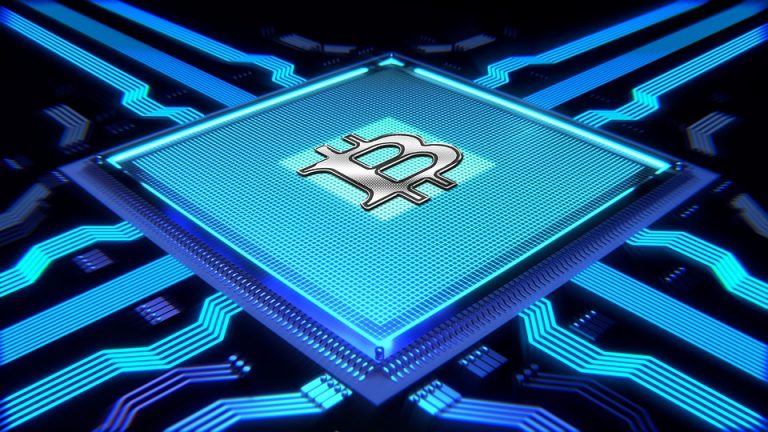So, you’re curious about mining cryptocurrency from home? You’re not alone. As the digital gold rush continues, more people are looking to tap into this lucrative opportunity. But where do you start? Let’s break it down into ten actionable steps that will have you mining in no time.
Contents
- 1. Understand What Cryptocurrency Mining Is
- 2. Choose Your Cryptocurrency
- 3. Assess Your Hardware Needs
- 4. Set Up a Wallet
- 5. Select Mining Software
- 6. Join a Mining Pool
- 7. Calculate Your Costs and Potential Profits
- 8. Set Up Your Mining Rig
- 9. Monitor Your Mining Performance
- 10. Stay Informed and Adapt
- FAQs
- Conclusion
- References
1. Understand What Cryptocurrency Mining Is
Before diving in, let’s clear up what mining really means. In simple terms, cryptocurrency mining is the process of validating transactions on a blockchain network. Miners use powerful computers to solve complex mathematical problems, and in return, they’re rewarded with cryptocurrency.
But don’t let the allure of free coins blind you. Mining requires significant resources—both hardware and electricity. According to a study by the Cambridge Centre for Alternative Finance, the global electricity consumption of Bitcoin mining alone is comparable to that of entire countries. So, be prepared for the investment.
2. Choose Your Cryptocurrency
Not all cryptocurrencies are created equal. Bitcoin might be the poster child, but there are numerous other coins to consider. Here’s a quick rundown:
- Bitcoin (BTC): The original and most popular, but requires significant investment in specialized hardware (ASIC miners).
- Ethereum (ETH): Transitioning to proof-of-stake, but still mineable with GPUs for now.
- Litecoin (LTC): Often called the silver to Bitcoin’s gold, it’s more accessible for home mining.
- Monero (XMR): A privacy-focused coin that can be mined with standard CPUs.
Each coin has its pros and cons. For instance, while Bitcoin offers high rewards, it also has high competition and energy costs.
3. Assess Your Hardware Needs
At this point, you might be thinking, “What do I need to get started?” The answer depends on the cryptocurrency you choose. Here’s a breakdown:
- ASIC Miners: Specifically designed for Bitcoin and some other coins. They’re powerful but can be expensive.
- GPUs: Graphics cards are versatile and can mine various coins, including Ethereum and Litecoin. They’re generally more accessible for beginners.
- CPUs: Central processing units can mine coins like Monero, but the returns are significantly lower.
When shopping for hardware, consider not only the upfront costs but also the potential returns and energy consumption.
4. Set Up a Wallet
You’ll need a secure place to store your cryptocurrency once you start mining. There are different types of wallets:
- Software Wallets: These are apps you install on your computer or mobile device. They’re convenient but can be vulnerable to hacks.
- Hardware Wallets: Physical devices that store your coins offline. They’re more secure but come with a price tag.
- Paper Wallets: A physical printout of your public and private keys. While secure, they can be easily lost or damaged.
Choose a wallet that fits your needs, keeping security and accessibility in mind.
5. Select Mining Software
Once you have your hardware and wallet, it’s time to choose mining software. The software you select will depend on the cryptocurrency you’re mining. Some popular options include:
- CGMiner: A versatile software that supports ASIC and FPGA miners.
- NiceHash: Great for those who want to mine multiple cryptocurrencies and sell their hashing power.
- MinerGate: User-friendly for beginners with a built-in wallet.
Make sure to download software from reputable sources to avoid malware.
6. Join a Mining Pool
Mining on your own can be a daunting task. That’s where mining pools come in. By joining a pool, you combine your computational power with others to increase the chances of solving a block. Rewards are then distributed among members based on their contributions.
Some popular mining pools include:
- Slush Pool: One of the oldest and most trusted Bitcoin pools.
- Ethermine: A popular choice for Ethereum miners.
- F2Pool: Supports a wide variety of cryptocurrencies.
The downside? You’ll have to share your rewards, but the increased likelihood of earning something can be worth it.
7. Calculate Your Costs and Potential Profits
Before diving headfirst into mining, you need to crunch some numbers. Consider:
- Electricity Costs: Calculate how much it will cost to run your mining rig.
- Hardware Costs: Factor in the initial investment in your mining equipment.
- Mining Difficulty: As more miners join the network, the difficulty increases, affecting your potential earnings.
There are several online calculators available, such as CryptoCompare and WhatToMine, that can help you estimate your potential profits based on current market conditions.
8. Set Up Your Mining Rig
Now it’s time for the fun part—setting up your mining rig. Here’s a straightforward checklist:
- Assemble Your Hardware: Connect your GPU(s) or ASIC miner according to the manufacturer’s instructions.
- Install Your Mining Software: Follow the setup guide for the software you chose.
- Configure Your Wallet Address: Make sure to enter your wallet address in the software settings.
- Optimize Settings: Adjust settings based on your hardware capabilities for maximum efficiency.
Once everything is set up, you’re just a click away from mining!
9. Monitor Your Mining Performance
You’re not done yet. Mining requires ongoing vigilance. Regularly check your mining software to monitor performance and profitability. Look out for:
- Hash Rate: Indicates how fast your rig is solving problems. Higher is better.
- Temperature: Keep an eye on your hardware’s temperature to prevent overheating.
- Rewards: Make sure you’re receiving payouts as expected.
Consider using monitoring tools like Minerstat or Awesome Miner for a more comprehensive view.
10. Stay Informed and Adapt
The cryptocurrency landscape is ever-evolving. What works today may not work tomorrow. Stay informed about market trends, hardware developments, and changes in mining regulations. Follow reputable crypto news sources, join forums, and engage with the community.
And let’s be real here: research is ongoing, and while results are promising, there’s always a level of risk involved in mining. Adaptability is key to long-term success.
FAQs
1. Can I mine cryptocurrency on my laptop?
While technically possible, it’s not recommended. Laptops generally lack the necessary power and cooling systems, leading to overheating and potential damage.
2. How much can I earn from mining?
Earnings vary widely based on the cryptocurrency, your hardware, and electricity costs. Use online calculators to get a better estimate tailored to your situation.
3. Is mining legal?
Mining is legal in many countries, but regulations vary. Always check local laws to ensure compliance.
4. Do I need special licenses to mine?
Most home miners do not need special licenses, but it’s wise to verify local regulations to avoid any legal issues.
Conclusion
Mining cryptocurrency from home can be a rewarding venture if approached correctly. By following these ten steps, you’ll be well on your way to entering the fascinating world of crypto mining. Remember, it’s not just about the coins; it’s about understanding the technology and market dynamics that drive this space.
So, are you ready to power up and start mining? The future of finance may just be waiting for you at the end of your mining rig.
References
- Z. Li, L. Wang, & A. V. B. (2020). “Bitcoin Mining and Energy Consumption.” Cambridge Centre for Alternative Finance. Link
- A. Narayanan, J. Bonneau, E. W. Felten, A. Miller, & J. A. Halaburda. (2016). “Bitcoin and Cryptocurrency Technologies.” Princeton University Press. Link
- A. Schwartz. (2021). “The Economics of Cryptocurrency Mining.” Harvard Business Review. Link








